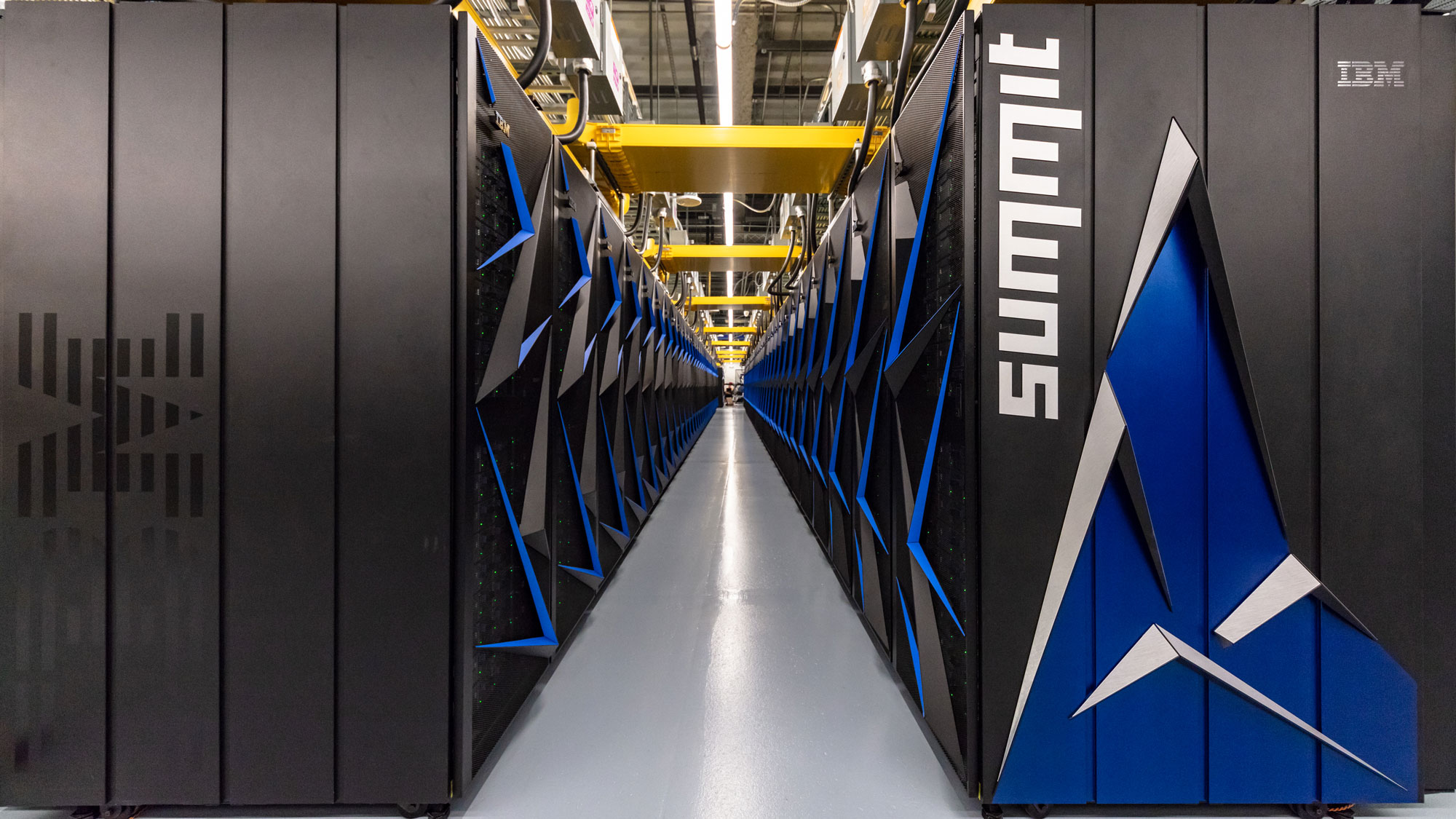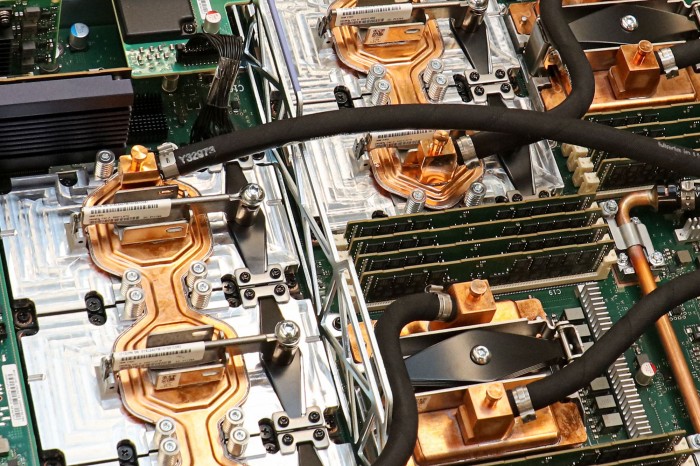The world’s most powerful supercomputer is tailor made for the AI era

Since 2013, Chinese machines have occupied the number one slot in rankings of the world’s most powerful supercomputers. Now America is back on top again. Engineers at the US Department of Energy’s Oak Ridge National Lab in Tennessee have just unveiled Summit, a supercomputer with enough processing power to surpass the current record holder, China’s Sunway TaihuLight.
The new machine is capable, at peak performance, of 200 petaflops—200 million billion calculations a second. To put that in context, everyone on earth would have to do a calculation every second of every day for 305 days to crunch what the new machine can do in the blink of an eye. Summit is 60 percent faster than the TaihuLight and almost eight times as fast as a machine called Titan, which is also housed at Oak Ridge and held the US supercomputing speed record until Summit’s arrival.
But it isn’t just national pride that’s at stake here. Supercomputers are already being used in industry for everything from designing new aircraft to creating new materials. Others are employed by the military to design nuclear weapons, and by scientists to conduct fundamental research. If the most powerful one is in the US, American researchers and the country’s armed forces will have an extra edge.

The team at Oak Ridge says Summit is the first supercomputer designed from the ground up to run AI applications, such as machine learning and neural networks. It has over 27,000 GPU chips from Nvidia, whose products have supercharged plenty of AI applications, and also includes some of IBM’s Power9 chips, which the company launched last year specifically for AI workloads. There’s also an ultrafast communications link for shipping data between these silicon workhorses.
Bob Picciano of IBM says all this allows Summit to run some applications up to 10 times faster than Titan while using only 50 percent more electrical power. Among the AI-related projects slated to run on the new supercomputer is one that will crunch through huge volumes of written reports and medical images to try to identify possible relationships between genes and cancer. Another will try to identify genetic traits that could predispose people to opioid addiction and other afflictions.
More powerful supercomputers like Summit will also help advance knowledge in areas like climate modeling. Patrick Brown of the Carnegie Institution for Science at Stanford University points out that one of the biggest challenges is modeling the behavior of clouds, which have a significant influence on the amount of warming we can expect. With more computing power, he says, it will be easier to model what’s happening to clouds in far greater detail and over longer time horizons. That could help sort out the relationship between results from different climate models.
Summit is also an important stepping stone to the next big prize in computing: machines capable of an exaflop, or a billion billion calculations a second. An international race is on to get to this milestone first, with the US and China considered the two front-runners. The US is looking at building several of these machines, which could cost between $400 million and $600 million each, and has engaged Nvidia, IBM, and other companies such as Intel to help. The aim is to get one or more of these “exascale” computers up and running between 2021 and 2023.
Jack Wells of Oak Ridge says the experience of building Summit, which fills an area the size of two tennis courts and carries 4,000 gallons of water a minute through its cooling system to carry away about 13 megawatts of heat, will help inform work on exascale machines, which will require even more impressive infrastructure. Things like Summit’s advanced memory management and the novel, high-bandwidth linkages that connect its chips will be essential for handling the vast amounts of data exascale machines will generate. Scientists at the national lab say they’ve already leveraged Summit’s AI smarts to conduct what is effectively an exascale comparative genomics calculation.
Thanks to these and other advances, Summit will help us reach even more impressive peaks of computing power.
Deep Dive
Computing
How ASML took over the chipmaking chessboard
MIT Technology Review sat down with outgoing CTO Martin van den Brink to talk about the company’s rise to dominance and the life and death of Moore’s Law.
Why it’s so hard for China’s chip industry to become self-sufficient
Chip companies from the US and China are developing new materials to reduce reliance on a Japanese monopoly. It won’t be easy.
Stay connected
Get the latest updates from
MIT Technology Review
Discover special offers, top stories, upcoming events, and more.